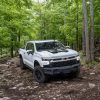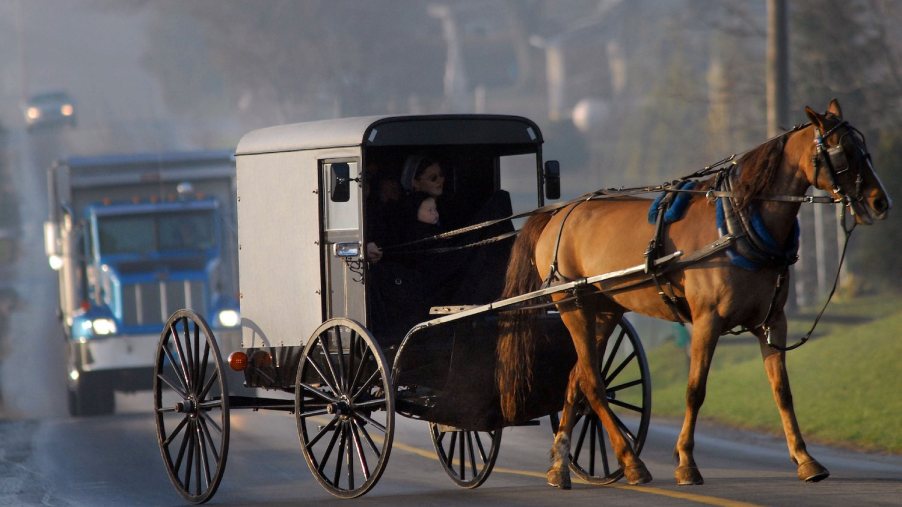
Wait, Can Amish Folks Drive Farm Trucks?
We all must decide which modern technologies to invite into our lives and which to reject. A high number of us automotive journalists, for example, avoid the dreadful automatic transmission at all costs. The Amish community is famous for rejecting automobiles and, instead, using horses and buggies to travel on roads. While some Amish churches are allowed internal combustion equipment for their businesses, almost all avoid vehicles that might seduce them into replacing their buggies–such as farm trucks. Certain Amish churches allow engines but ban rubber tires–to avoid the temptation of taking unnecessary drives.
Why don’t Amish people drive cars?
The Amish are a religious community that lead simple, agrarian lives to stay close to their community and their God. Many see traveling by horse instead of a car as a way to avoid becoming arrogant or distance themselves from their community.
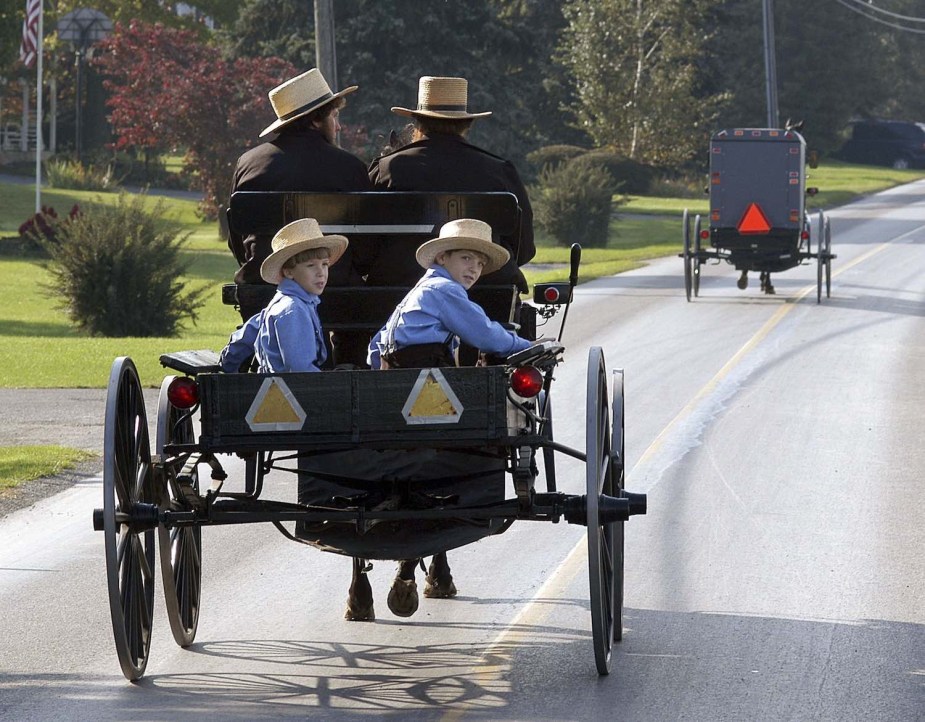
This central belief of the Amish community is reflected in Romans 12:2, “Do not conform any longer to the pattern of this world, but be transformed by the renewing of your mind.”
But many Amish churches also preach the value of hard work. A number of community members who work in construction or run especially large farms must have motorized equipment to enable these businesses. As a result, many Amish churches have an interesting set of guidelines around work equipment–including trucks.
Are Amish people allowed to drive work trucks?
Every Amish church has its own set of rules for its congregation. It is uncommon for the Amish to drive their own work trucks, but is not unheard of for Amish business owners to hire a non-Amish driver. It is more common for the Amish to own and drive non-highway work vehicles, such as tractors.
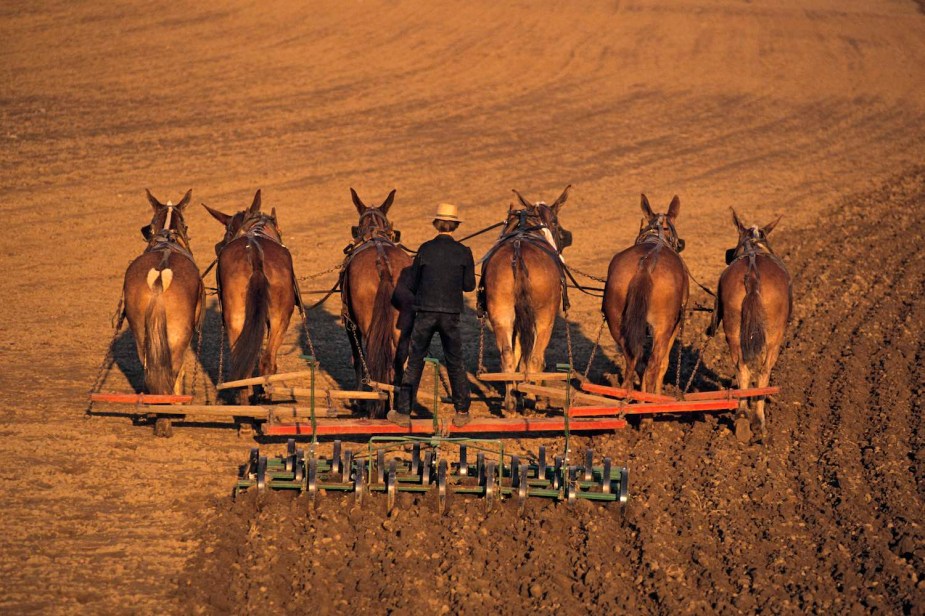
Depending on the specific church, there are several possible loopholes for internal combustion vehicle use. Most Amish folks allow themselves to ride in on-road vehicles but not drive them. They’ll often try to use other means (a bicycle, buggy, or train, for example). But say an Amish person owns a roofing company and a truck, they can usually just hire a non-Amish person (often called an “English”) to be their driver.
Rubber tires: promoting sloth and vanity since 1888
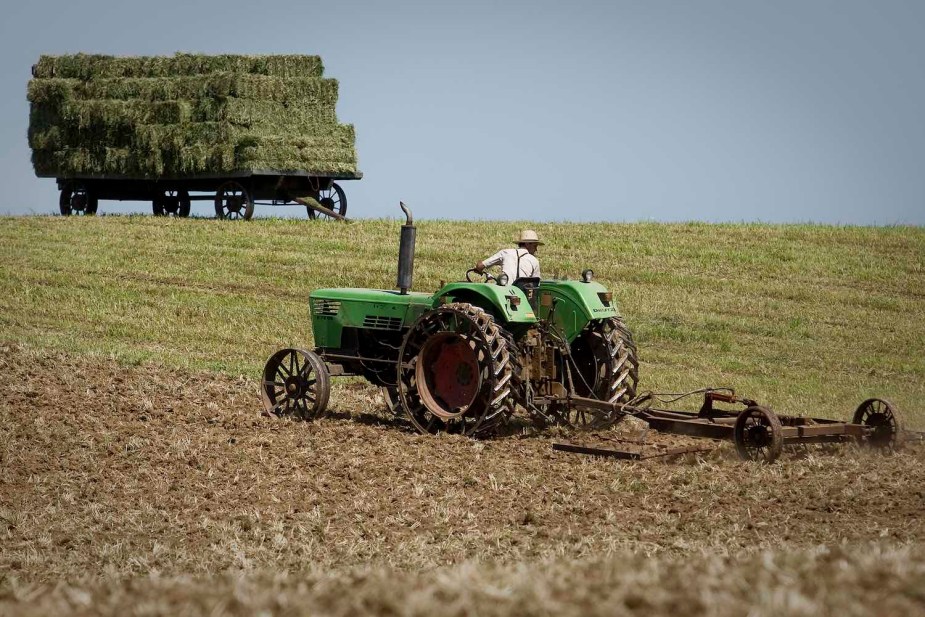
Some Amish churches go so far as allowing motorized equipment but specifically banning rubber tires. AmishBaskets.com says, ” Rubber tires are seen as a product that can promote sloth and vanity.”
Wait, what? You read that right. That’s enough to make any car owner feel lazy.
In all seriousness, Amish churches have a logical reason for this rule. Let’s say an Amish farmer feels they need a tractor for work. Mounting steel wheels means it remains a capable farm vehicle but is almost unusable on the road. Sure, the driver could cross a road to get from one pasture to another. But if they need to pick something up at the store, they will probably swing by home and swap to a nice, comfortable buggy. It’s hard to be tempted to use your tractor like a car when it’s less comfortable than a horse.
Understanding Amish Practices Regarding Vehicles
In conclusion, the Amish community’s approach to modern technology, particularly their stance on vehicles and work trucks, is deeply rooted in their religious beliefs and commitment to a simple, agrarian lifestyle. The rejection of cars and preference for horse-drawn buggies stem from a desire to stay close to their community and avoid worldly distractions, as guided by their interpretation of Romans 12:2.
While many Amish communities strictly avoid personal use of on-road vehicles, there are nuanced rules around work-related equipment. Some Amish business owners may hire non-Amish drivers to operate trucks, aligning with their commitment to hard work while maintaining adherence to community values.
The specific guidelines regarding vehicle use vary among Amish churches, showcasing the diversity of practices within the community. From allowing non-highway work vehicles like tractors to permitting the use of motorized equipment but prohibiting rubber tires, each church tailors its rules to balance practicality with the preservation of traditional values.
Understanding these nuances provides insight into the careful considerations made by the Amish when navigating the integration of technology into their lives. It reflects a commitment to maintaining a balance between embracing necessary advancements for work while safeguarding the core principles that define their unique way of life.

